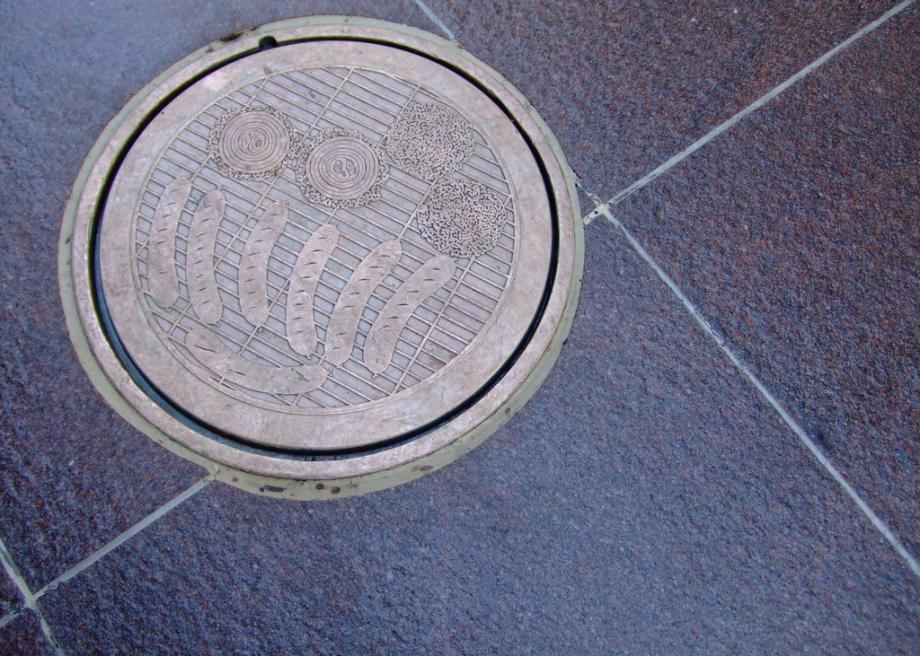Minneapolis’ Marvelous Manhole Covers
Atlas Obscura on Slate is a blog about the world’s hidden wonders. Like us on Facebook and Tumblr, or follow us on Twitter.
Most visitors to new cities don't come home raving about the location's manhole covers, but the city of Minneapolis has made its underfoot sewer covers a point of artistic pride, with designs that celebrate the area's art, history, and wildlife.
In the early 1980s, Minneapolis began asking artists to design iconic manhole covers for the city. They picked 11 artists to create illustrations for the ubiquitous urban sight, and each of the chosen creators provided a different take. From David Atkinson's whimsical summer grill design to Stuart D. Kippler's introspective geography marker, each of the covers turned what was once a mundane city feature into a unique piece of art.
In 1990 the city renovated the popular Nicollet Mall and tapped artist Kate Burke to create designs for manhole covers that would be spread across a 13-block area of downtown Minneapolis. She took inspiration from the state's many official accoutrements, and across 11 designs, Burke created sculpted images of regional icons like the Minnesota state fish (the walleye), the state fruit (Halverson apple), and the state bird (loon). The detailed pieces of steel each feature tableaus of their subject that make most municipal equipment look lazy by comparison. Some of the covers even feature small hidden details such as a worm in the state apple, or a pheasant erupting from the bronzed image of the state grain (wild rice).
Locals and tourists alike have a tendency to literally pass over the unique manhole covers these days, but for those willing to hunt them down, they can act as a one-of-a-kind connect-the-dots of urban art.
More wonders to explore:

